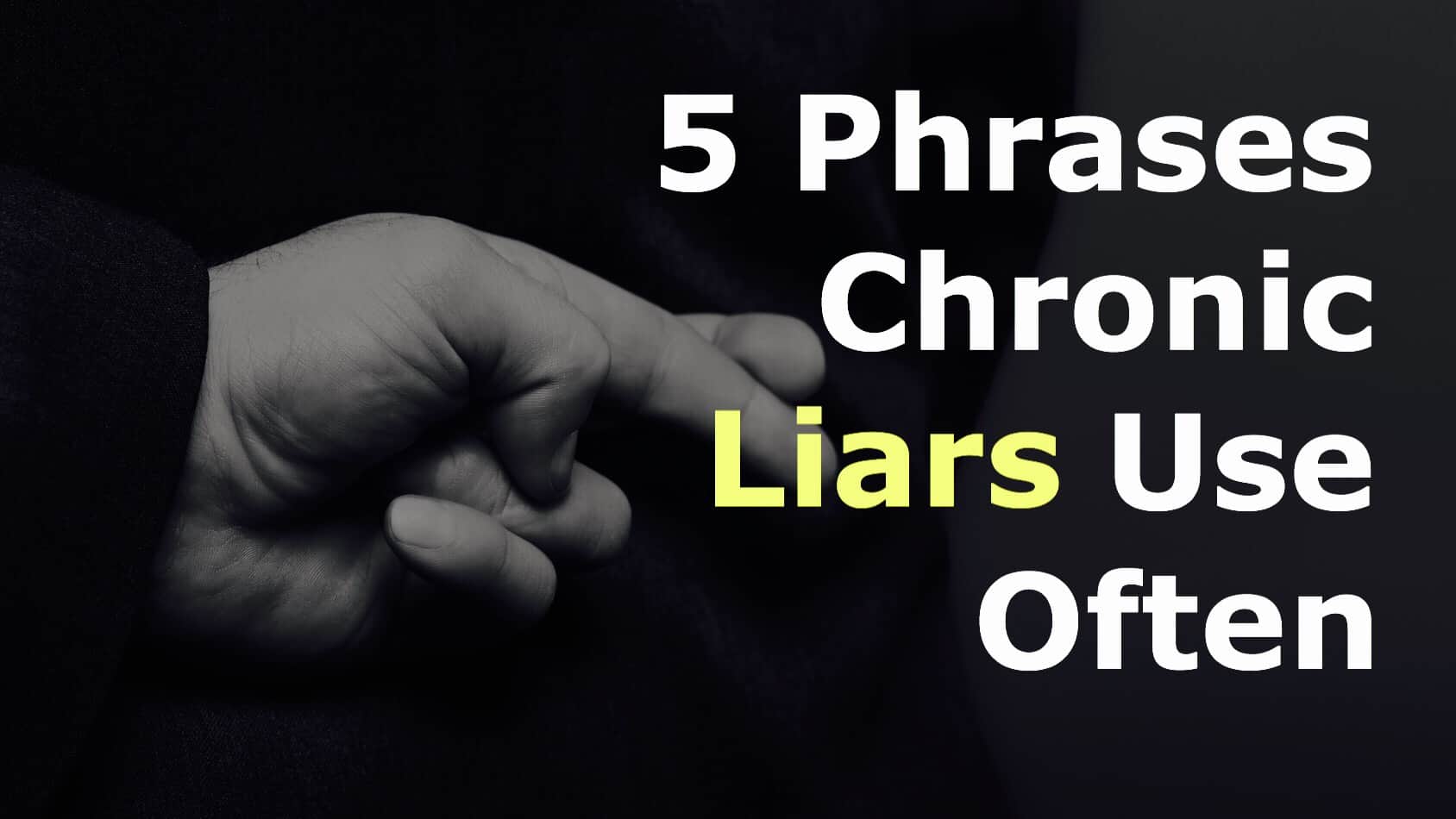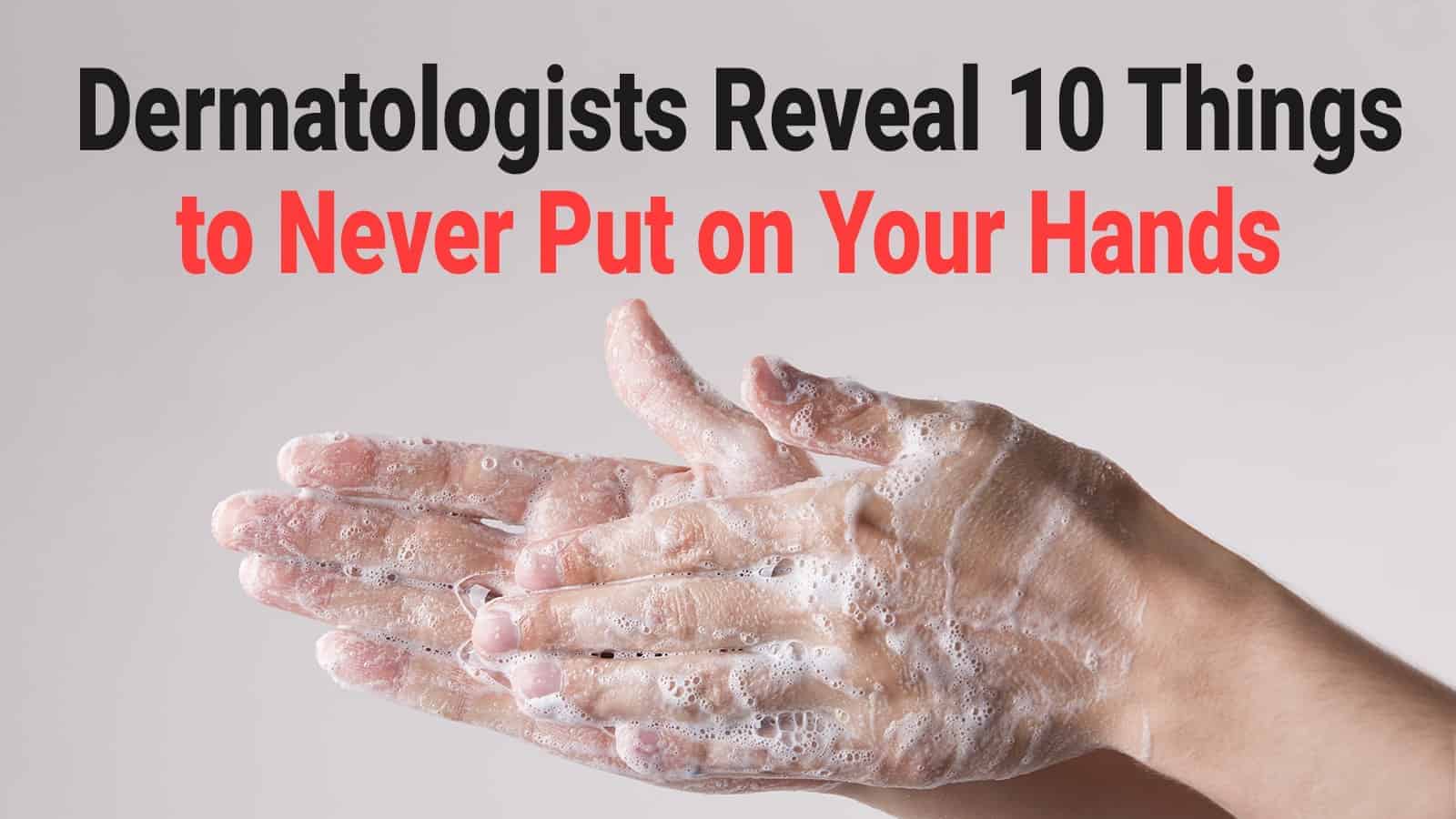The skin is the largest organ of the body. When you have a skin condition or dermatologic disease, it is quite noticeable and uncomfortable. This can be embarrassing and quite alarming.
It can even bring someone’s self-esteem down, so you want your skin to look better right away. Many skin conditions can look similar, but it’s important to know the different diseases to determine what you have and how to fix it.
Here are ten rashes that could reveal a dermatologic disease.
1. Acne

Acne is a skin condition that occurs when pores fill with oil or other foreign materials. This clogging causes pimples, blackheads, and whiteheads on the skin. It can happen just about anywhere on the body, but it often occurs on the face and back. It usually starts to develop in the teenage years during puberty. Sometimes it clears up, and other times it continues throughout adulthood.
There are several different types of acne that vary in appearance and severity. In severe cases, acne can create scars on the skin that may not go away. It’s not wise to pop pimples as they may develop scars.
There are several products you can find at your local drugstore. However, if those products don’t work with time, you may want to go to a dermatologist to get something more active.
If you do suffer from acne, remember that it may be just a face. If you have a severe case, look for the beautiful things about yourself, and treat your skin to the best of your ability.
2. Cellulitis
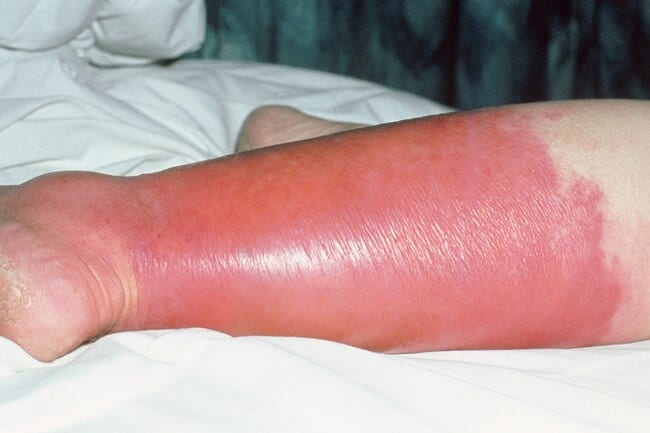
Cellulitis is a dermatologic disease that derives from a staph infection. It’s identifiable with red skin and pain. The skin may also be warm to the touch. The area can also develop blisters. Swollen lymph nodes and fever may also accompany the condition. It generally appears on the face, arms, or legs.
This condition is one of the more dangerous conditions on the list. While other conditions are mostly skin-deep, cellulitis can lead to sepsis if left untreated.
Sepsis is a severe infection that, in dire cases, can lead to death. This is because the skin can crack open and allow bacteria into the body. If you suspect you have this condition, set up a doctor’s appointment. In some cases, treatment may be tricky due to a lack of response to antibiotics.
3. Shingles

Shingles are a group of blisters that appear on the body. The blisters can be quite painful and generally filled with fluid. In many cases, the blisters will pop and may even crust over.
The condition is a reemergence of chickenpox later in life. The disease mostly affects people above 50 years of age.
However, once already contracted, there is no cure. Instead, a doctor will attempt to reduce the pain and discomfort of the symptoms. The doctor will typically do this with pain medication and antiviral medications. There may even be pain after the rash is gone. Unlike chickenpox, shingles are not contagious.
4. Eczema

Eczema is a relatively common skin condition that affects up to 30 percent of Americans. Symptoms include inflamed skin, redness, scales, and sometimes blisters. The skin can also be itchy. Severity varies greatly. Some people live with it every day or their lives while other people only experience flare-ups on occasion.
Eczema generally develops in infancy. It can clear up or continue into adulthood. Certain irritants can exasperate symptoms.
Unfortunately, there is no actual cure for eczema at this time. However, it is possible to help minimize the symptoms through different medications and lotions. While it doesn’t look attractive, the condition is not contagious.
5. Folliculitis

We all have multiple follicles in our skin where hair can grow. These follicles can become irritated and cause what is known as folliculitis. You will notice the irritation because of redness by the follicles. The skin can also be itchy and painful. While generally not very serious, the condition can lead to hair loss and scarring.
The condition can occur after shaving or getting bacteria from a hot tub. To avoid the situation, you should be careful when shaving.
You should go to a doctor if the problem is covering a huge part of the body or doesn’t go away in a couple of days. Generally, a doctor will prescribe an antibiotic.
6. Impetigo
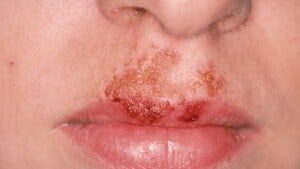
Common in young children, impetigo is a dermatologic disease that produces patches of blisters on the skin that continue to develop until they rupture. Another common sign is yellow crust around the blisters.
This condition is contagious. If the burst blisters contact other parts of the skin or other people, it can spread. Unfortunately, many young children aren’t great at not scratching when they itch, so it can be challenging to contain.
Babies are delicate. When you go to the doctor for the condition, the pediatrician will generally advise cleaning the infected area with warm, soapy water multiple times a day. Of course, you also want to be careful not to wash the area so much that it becomes overly dry and irritated. If the condition doesn’t get better, the doctor may prescribe an antibacterial cream.
7. Psoriasis

Psoriasis is a skin condition that causes the skin’s cells to grow until they raise on the surface in unsightly patches with white scales. The white scales are the dead skin scales that developed too quickly. It mostly affects the scalp, elbows, and knees. Psoriasis generally shows up as a person enters adulthood. The disease can be quite unsightly and cover large areas of skin at times. This disease lasts for life, but there may be times it goes away.
Psoriasis can be genetic. Stress, infections, and medications can also cause it. There are many different treatments depending on the patient and the severity of the condition. One of the principal treatments involves steroid cream or moisturizer. Another option is light therapy.
8. Ringworm
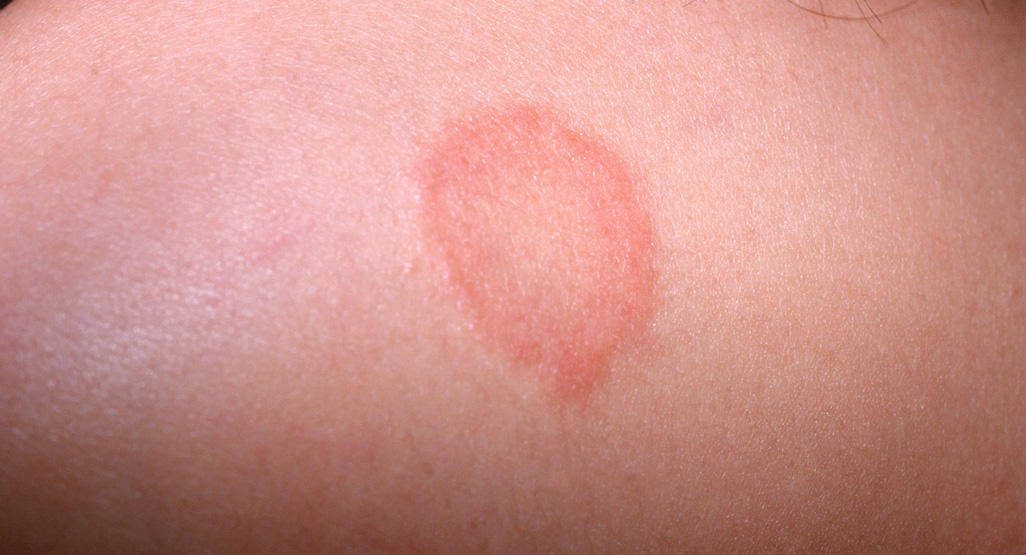
Ringworm is a fungal skin condition caused by, as suggested, a fungus. Some people assume that the disease is caused by a worm, but that is incorrect. While “worm” may be a bit misleading, “ring” is more accurate. The condition will be red in a circle shape but colorless in the middle.
The fungus is contagious. You can get ringworm from another person who has it, a pet, objects, or even the ground. It’s common, and anyone can get it. You can also get it anywhere on the body from the scalp to the groin to the feet. Ringworm on the toes is referred to as athlete’s foot while ringworm in the groin area is casually called jock itch. A doctor will generally prescribe an antifungal medication to treat the problem.
9. Rosacea

Rosacea is a dermatologic disease known for specifically affecting the face. It causes red skin and can make the blood vessels visible. In some cases, there may even be little pus-filled bumps. The condition mostly affects adult women with light skin.
Common triggers include sun, hairspray, and stress. Many times people will confuse it with acne, but it is its condition. Rosacea will typically be localized in one area of the face as acne generally is spread all over the face. When not treated in any way, it can become worse with time. Treatments include antibiotics and acne medication.
10. Vitiligo

Vitiligo is a condition that involves the skin losing pigment in different parts of the body. This is a very noticeable condition because of the drastic difference in the color of the different parts of the skin. Plus, it happens all over the body. It will often be on the face, body, and even inside the mouth. This dermatologic disease occurs when the cells that create pigment die in certain areas.
There is no cure. However, there are ways to manage the condition or make the skin appear more even. Some conventional treatments include light therapy and surgery.
Some people choose to embrace this skin condition and appreciate how it makes them look unique compared to other people. In fact, there are several models with vitiligo who are crushing the fashion scene.
Final Thoughts on Identifying a Dermatologic Disease
If you have a dermatologic disease, you need to remember that you are still beautiful. Don’t let the problem get you down. Instead, repeat different positive affirmations about beauty and get on with your day. While you should not put your worth in how your skin looks, you should call a dermatologist to get assistance with your condition right away. Even the conditions that aren’t dangerous can get worse with time if you don’t take action, so schedule an appointment today.











